Zesty Asparagus & Feta Orzo Salad Recipe to Brighten Your Day
Mediterranean summers burst with vibrant asparagus & feta orzo salad flavors that dance across your plate.
Crisp green spears mingle beautifully with crumbly cheese and tender pasta.
Bright lemon zest adds a zingy punch to this light, refreshing dish.
Delicate herbs weave through each delectable bite, creating a symphony of taste.
Quick and simple ingredients combine to deliver maximum flavor with minimal effort.
Layers of texture promise a delightful culinary experience you won’t soon forget.
Dig in and savor every mouthwatering moment of this incredible summer classic.
Why Asparagus & Feta Orzo Salad Is So Fresh
Ingredients for Asparagus & Feta Orzo Salad
Main Ingredients:Supporting Ingredients:Seasoning:How to Make Asparagus & Feta Orzo Salad
Step 1: Prepare Boiling Water
Fill a large pot with water and add a generous pinch of salt. Bring the water to a rolling boil over high heat.
Step 2: Cook Orzo Pasta
Carefully add orzo to the boiling water. Stir occasionally and cook until the pasta reaches a tender al dente texture, typically taking 8-10 minutes.
Once cooked, drain the orzo and rinse with cold water to stop the cooking process and cool it down.
Step 3: Prepare Asparagus
Wash the asparagus thoroughly.
Snap or cut off the tough woody ends. Chop the asparagus into bite-sized pieces that will blend easily with the orzo.
Step 4: Saute Asparagus
Heat olive oil in a skillet over medium heat. Add the asparagus pieces and cook, stirring occasionally, until they turn a vibrant green and become tender-crisp, which usually takes 3-5 minutes.
Step 5: Combine Salad Ingredients
In a large mixing bowl, combine the following ingredients:Drizzle with additional olive oil and fresh lemon juice. Season with salt and pepper to taste.
Gently toss all ingredients until well mixed.
Step 6: Chill and Serve
Cover the salad and refrigerate for at least 30 minutes.
This resting time allows the flavors to meld together beautifully. Serve chilled as a refreshing side dish or light meal.
Tips for Orzo Salad Success
Variations for Asparagus & Feta Orzo Salad
Best Pairings for Orzo Salad
Sauvignon Blanc or Pinot Grigio beautifully complement the bright, fresh flavors of asparagus and lemon in the salad, cutting through the richness of feta cheese with their zesty acidity.
Light chicken or fish like salmon perfectly balance the orzo salad, adding protein while maintaining the dish’s delicate Mediterranean-inspired profile.
Crusty sourdough or rustic garlic bread provide a wonderful textural contrast, helping to soak up the lemony olive oil dressing and adding a satisfying crunch.
Sprinkle chopped fresh basil or dill on top to enhance the salad’s herbal notes, bringing an extra layer of aromatic complexity to the entire dish.
Proper Storage for Asparagus & Feta Orzo Salad
FAQs
Orzo is a type of pasta that looks like large grains of rice. It’s made from wheat flour and is commonly used in Mediterranean and Greek cuisine.
Fresh asparagus is recommended for better texture and flavor. Frozen asparagus can become mushy and lose its crisp quality when cooked.
Asparagus is done when it turns bright green and is tender-crisp. This usually takes 3-5 minutes of sautéing. It should be slightly firm when you bite into it, not soft or limp.
Print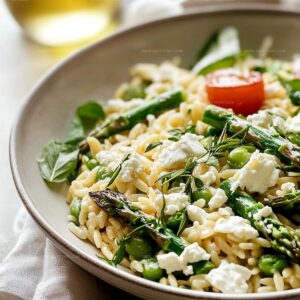
Asparagus & Feta Orzo Salad Recipe
- Total Time: 25 minutes
- Yield: 4 1x
Description
Mediterranean flavors dance in this Asparagus & Feta Orzo Salad, bringing fresh herbs and tangy cheese together with tender pasta. Summer’s freshest ingredients create a light, zesty dish that delights you with each refreshing bite.
Ingredients
Vegetables and Pasta:
- 1 cup dry orzo pasta
- 1 cup fresh asparagus, chopped
- 1 cup cherry tomatoes, halved
Cheese:
- 1 cup crumbled feta cheese
Dressing and Seasonings:
- 3 tablespoons (45 milliliters) olive oil
- Juice of 1 lemon
- Salt to taste
- Pepper to taste
Instructions
- Prepare a generously salted pot of water and bring to a rolling boil at high heat.
- Submerge orzo and cook until perfectly tender yet firm, approximately 8-10 minutes, stirring occasionally.
- Drain pasta thoroughly and rinse under cold water to halt cooking process, then set aside to cool completely.
- Carefully remove the tough, fibrous ends from asparagus and slice into bite-sized segments.
- Warm olive oil in a skillet over medium-high temperature, creating a light shimmer across the surface.
- Gently sauté asparagus pieces until they transform into a vibrant emerald green and achieve a delicate crisp texture, roughly 3-5 minutes.
- Combine cooled orzo, roasted asparagus, halved cherry tomatoes, crumbled feta cheese, remaining olive oil, and fresh lemon juice in a spacious mixing bowl.
- Season the mixture with salt and freshly ground black pepper, ensuring even distribution of flavors.
- Transfer the salad to the refrigerator and allow it to rest for a minimum of 30 minutes, enabling the ingredients to harmonize and intensify their collective taste profile.
Notes
- Quickly cool orzo under cold running water to stop cooking and prevent mushy texture.
- Choose fresh, firm asparagus with tight, deep green tips for the best flavor and crunch.
- Customize the salad by adding grilled chicken or keeping it vegetarian with pine nuts for extra protein.
- Prepare this dish ahead of time, as it tastes even better after marinating overnight in the refrigerator.
- Prep Time: 15 minutes
- Cook Time: 10 minutes
- Category: Lunch, Dinner, Appetizer, Snacks
- Method: Boiling
- Cuisine: Mediterranean
Nutrition
- Serving Size: 4
- Calories: 410 kcal
- Sugar: 3 g
- Sodium: 580 mg
- Fat: 20 g
- Saturated Fat: 5 g
- Unsaturated Fat: 15 g
- Trans Fat: 0 g
- Carbohydrates: 38 g
- Fiber: 3 g
- Protein: 11 g
- Cholesterol: 15 mg

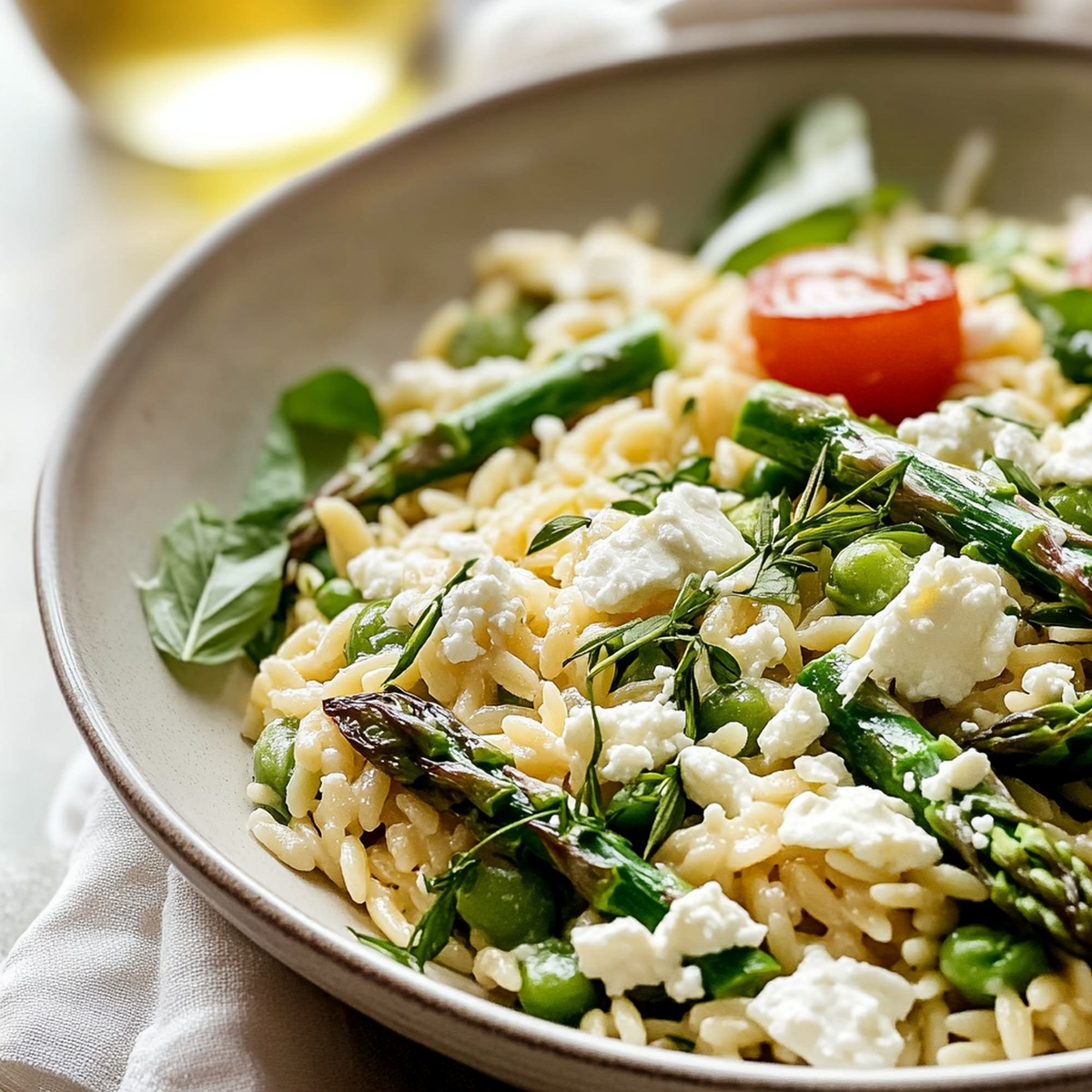
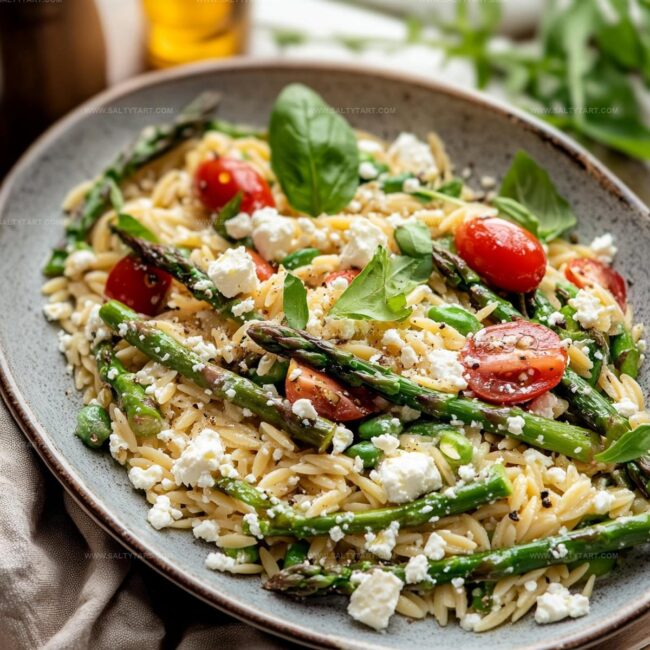
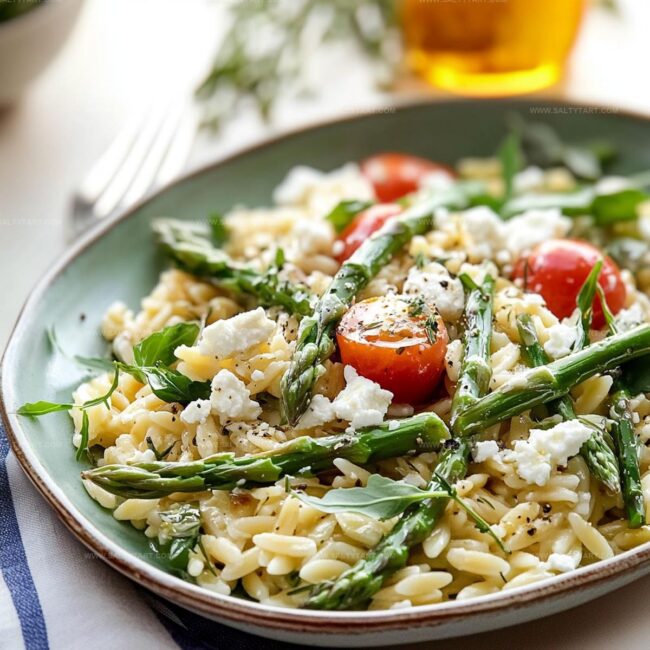
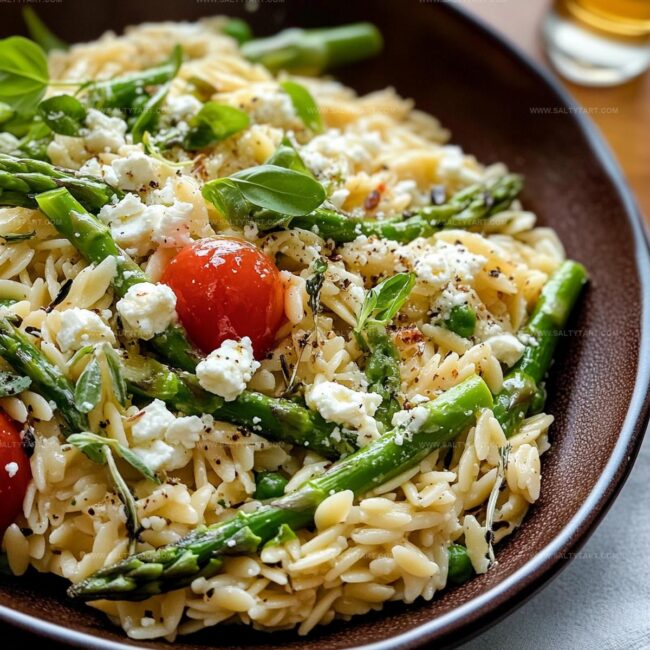
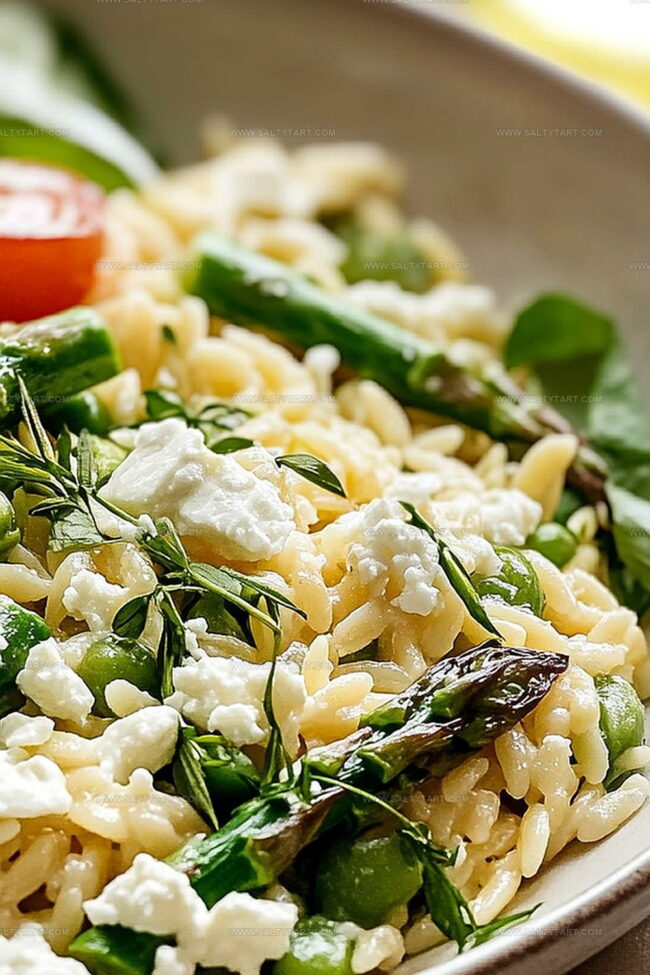
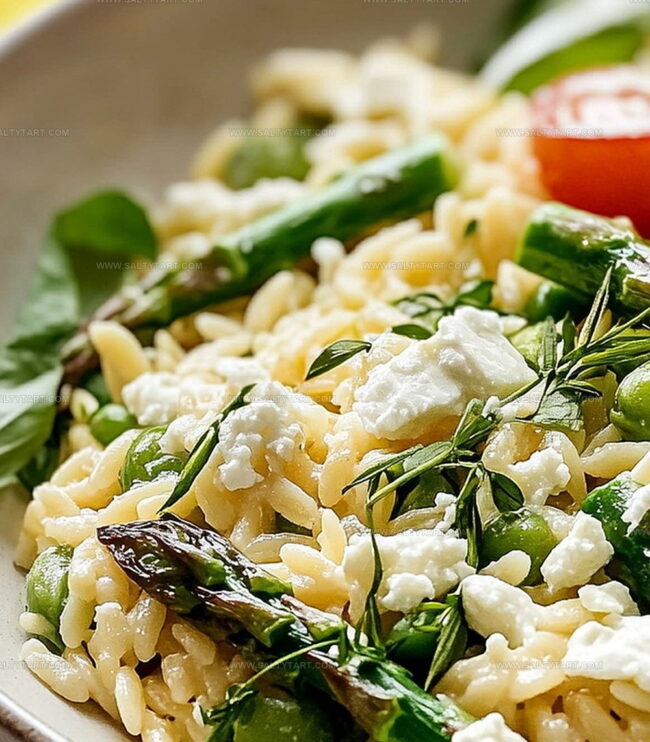
Mike Reynolds
Founder & Recipe Developer
Expertise
Farm-to-table cuisine, Seasonal recipe development, Sustainable cooking techniques, Food photography
Education
Asheville-Buncombe Technical Community College (A-B Tech)
Associate Degree in Culinary Arts
Mike studied culinary arts with a strong focus on farm-to-table principles and sustainable cooking. His training emphasized the importance of fresh, local ingredients and environmentally responsible practices in the kitchen.
Mike’s food journey began deep in the Blue Ridge Mountains, where weekends at farmers’ markets and home-cooked meals sparked a lifelong obsession with simple, seasonal eating.
After earning his Associate Degree in Culinary Arts from Asheville-Buncombe Technical Community College, he set out to bring farm-to-table cooking into everyday kitchens, without the fuss.
Mike’s philosophy is all about keeping it fresh, unfussy, and full of heart. When he’s not crafting new single-serving recipes, he’s hiking mountain trails, chatting with local farmers, or experimenting with wild ingredients in his backyard kitchen.